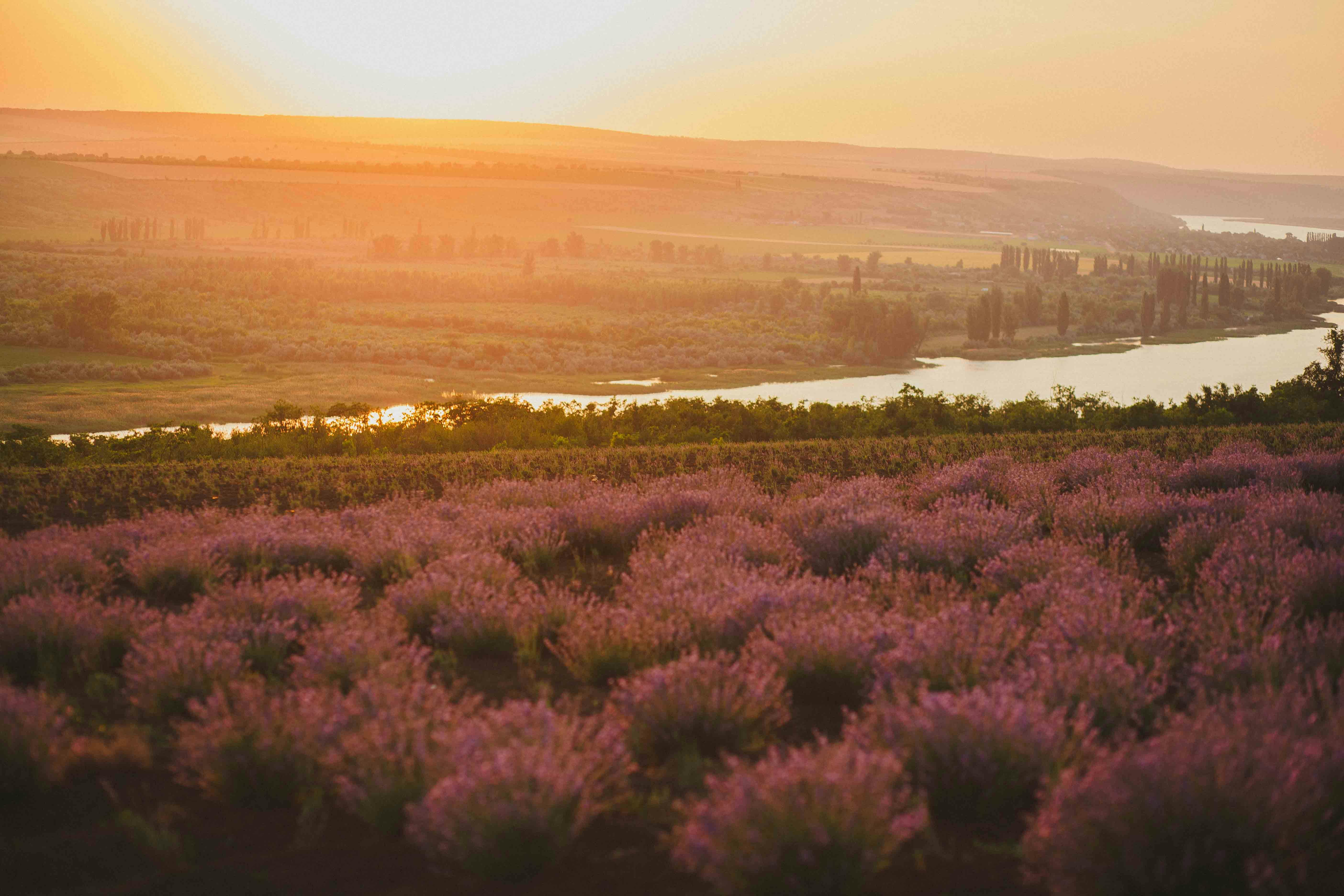Lavender is a popular flowering plant with a pleasant scent and beautiful purple blooms. It is also fairly easy to care for, but one of the main questions that people have is how often should they water their lavender plants? In this article, we will discuss how much water your lavender plants need, when to water them, and tips for keeping your lavender looking its best.It is recommended to water lavender plants once a week, making sure the soil is kept moist but not soggy. During hot summer months, lavender may need to be watered more often. If you notice the leaves wilting, it’s a good indication that the plant needs to be watered.
Best Practices for Watering Lavender
Watering lavender can be a tricky task, as it is sensitive to both under- and over-watering. To ensure that your lavender is healthy and thriving, it’s important to follow some basic best practices for watering. It is best to water the plant deeply and infrequently, rather than lightly and often. This encourages the roots of the plant to grow deeper into the soil, which makes it better able to withstand both drought and heat. When watering lavender, it’s also important to pay attention to the soil’s moisture content. If the soil feels dry more than an inch below the surface of the soil, it is time to water. If it feels wet or soggy, wait until the soil has dried out before watering again.
When watering lavender, use lukewarm water instead of cold water as this helps prevent shock to the plant’s root system. Additionally, avoid wetting the leaves of your lavender plants as this can lead to fungal diseases such as powdery mildew. Also, make sure not to splash water on nearby plants while you are watering your lavender plants as this could spread disease or pests from one plant to another. Finally, apply mulch around your lavender plants in order to help retain moisture in the soil and keep weeds at bay.
By following these best practices for watering your lavender plants you can ensure that they stay healthy and happy for many years!
How Much Water Does Lavender Need?
Lavender is a beautiful and fragrant flowering plant that can be grown in many climates. It requires very little maintenance and is relatively drought-tolerant, but it does need to be watered regularly to ensure its health and proper growth.
The amount of water needed by lavender depends on several factors such as the climate, soil type, and variety of lavender being grown. In general, lavender plants should be watered deeply two or three times per week during the growing season. During hot weather, the plants may need to be watered more frequently. During cooler periods, however, waterings can be reduced to once a week.
It is important to check the soil around the plant before watering to make sure it is dry before adding more water. Overwatering can cause root rot in lavender plants and should be avoided at all costs. Additionally, water from overhead sprinklers or hoses should be avoided as this could damage both flowers and foliage. Instead, provide your lavender plants with a deep soaking at ground level whenever possible.
By following these simple watering guidelines you can ensure that your lavenders have everything they need for healthy growth throughout the growing season!
How to Properly Water Lavender
Watering lavender plants is an important part of maintaining healthy growth and blooming. It is important to provide the right amount of water for lavender plants to thrive, as too much or too little can cause problems. To properly water lavender, it is best to water deeply and infrequently. This will encourage the plant to develop a strong root system and resist drought and other stressors such as high temperatures. When watering, it is important to avoid wetting the foliage, as this can lead to fungal diseases. Additionally, it is best to water in the morning so that any moisture on the leaves can dry off during the day. In terms of frequency, lavender should be watered when the top inch or two of soil becomes dry. For established plants in hotter climates, this may be every few days; for those in cooler climates or during cooler times of year, it may be every week or two.
It is also essential to consider how much water your lavender plants need based on climate and soil type. In general, sandy soils usually require more frequent watering than loam soils since they have less natural moisture-holding capacity. In hot climates with low humidity levels and lots of sun exposure, more frequent watering may also be necessary due to increased evaporation from both wind and sun. On the other hand, in cooler climates with more consistent humidity levels and less direct sunlight, less frequent watering may be sufficient.
Overall, providing adequate drainage and deep but infrequent watering are key for keeping your lavender plants healthy. With proper care and attention, you can ensure that your lavenders will thrive for many years!
Factors That Affect How Often to Water Lavender
Watering lavender is one of the most important factors in maintaining a healthy garden. There are several factors that can affect how often you should water your lavender plants, such as the soil type, air temperature, humidity, and amount of sunlight. It is important to understand how these factors affect your lavender so you can provide it with the proper amount of water it needs for optimal growth.
Soil Type
The type of soil your lavender is planted in will play an important role in how often it needs to be watered. Soils that are heavy and hold more moisture will need less frequent watering than soils that are light and well-draining. If your soil is clay-based or has a high content of organic matter, it will hold onto water longer and require less frequent watering. Conversely, if your soil is sandy or has a low content of organic matter, it will need to be watered more frequently since it won’t be able to retain much moisture.
Air Temperature
The air temperature can also have an effect on the frequency at which you should water your lavender plants. Warmer temperatures tend to increase evaporation and therefore require more frequent watering than cooler temperatures do. In general, lavender plants should be watered more often during hotter months and less often during cooler months.
Humidity
The humidity levels in the environment where your lavender is planted can also have an impact on how often you should water them. Higher humidity levels will mean that less frequent watering is needed since there is already moisture in the air that can be absorbed by the plants’ roots. On the other hand, lower humidity levels will mean that more frequent watering is necessary as there isn’t as much moisture in the air for the roots to absorb.
Amount of Sunlight
Lastly, the amount of sunlight your lavender receives can also influence how often you need to water them. Plants that receive full sun will typically require more frequent watering than those that are planted in partial shade or full shade areas since they are exposed to higher temperatures and increased evaporation rates due to direct sunlight exposure. It’s important to adjust your watering schedule accordingly depending on how much sun your plants get each day so they don’t dry out too quickly or become over-watered due to excessive amounts of rainfall or irrigation.

Signs of Overwatering in Lavender
Overwatering lavender plants can cause a variety of problems, including wilting, yellowing leaves, root rot, and even death. Wilting is often the first sign of overwatering. The plant will start to droop and the leaves will become limp. Yellowing leaves are another symptom of too much water. The leaves will turn yellow or brown and may start to curl. Root rot can occur if the roots are left in standing water for too long. This causes them to rot from lack of oxygen and can eventually kill the plant. If these signs are ignored, it can lead to death as the plant’s root system becomes too weak to absorb any more water or nutrients from the soil.
It’s important to check your lavender plants regularly for signs of overwatering, such as wilting or yellowing leaves. If you notice these signs, adjust your watering schedule accordingly and make sure that the soil has adequate drainage so that there is no standing water around the roots.
Signs of Underwatering in Lavender
Underwatering is one of the most common problems that can affect lavender plants. If your lavender plants are not getting enough water, they may start to show signs of stress. Here are some of the signs to look out for:
The most obvious sign is wilting or drooping leaves. This happens when the roots are not able to take up enough water and the leaves start to dry out. The leaves may also become discolored, turning yellow or brown.
Another sign is brittle stems and branches. This happens when the plant is not able to take up enough moisture from the soil and it starts to lose its structure and strength.
Finally, you may also notice that your lavender plants are not producing as many flowers as they usually do. This can be an indication that they are not getting enough water and need to be watered more regularly.
If you notice any of these signs, it’s important to act fast and make sure your lavender plants get enough water. Water them deeply at least once a week and make sure that the soil around them stays moist but not soggy.
The Benefits of Appropriate Watering of Lavender
Watering lavender is an important part of growing and maintaining a healthy plant. Appropriate watering can help ensure that the plant receives necessary nutrients, helps prevent disease, and encourages healthy growth. Some of the benefits of appropriate watering for lavender include improved flowering, enhanced aroma and flavor, and increased resistance to disease.
Watering lavender at the right time is essential for the health of the plant. For best results, water lavender deeply and regularly throughout the growing season — once or twice a week in most climates. This helps ensure that the plant’s roots have enough water to absorb nutrients from the soil and provide adequate moisture for cell function and growth.
Appropriate watering also helps prevent disease in lavender plants. Too much or too little water can cause fungal diseases such as root rot or powdery mildew to develop. By providing just enough water to keep soil slightly moist, you can help keep your plants healthy and free from disease.
Regular watering also encourages more vigorous flowering in lavender plants. When soil is kept consistently moist, plants are able to absorb more nutrients which leads to larger blooms with more vibrant colors and stronger aromas and flavors.
In addition, regular watering helps increase resistance to pests such as aphids, spider mites, whiteflies, and other insects that can cause damage to lavender plants. By keeping soil moist, you create an environment that is less hospitable to these pests which reduces their ability to thrive on your plants.
In summary, appropriate watering is essential for growing healthy lavender plants that are resistant to disease and produce vibrant blooms with strong aromas and flavors. Water your plants deeply once or twice a week during the growing season for best results.

Conclusion
Watering lavender is a simple but important task for keeping your plant healthy and strong. It requires regular attention and adjustments based on the season. In general, lavender should be watered deeply once a week in the spring, summer and fall. In winter, water less often to prevent root rot and other issues caused by too much moisture.
You may find that your particular lavender variety needs more or less water than suggested here. Pay close attention to the condition of your plants and adjust your watering schedule accordingly. With a little bit of care and attention, you can make sure that your lavender thrives in its new home!

